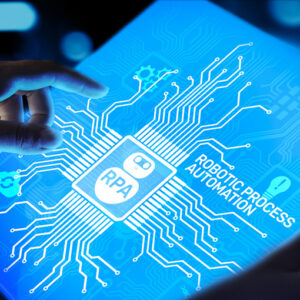 The healthcare industry has undergone massive changes in recent years, largely driven by advances in technology and data. One area seeing significant innovation is medical billing software. These new solutions are transforming how healthcare providers handle billing, collections, reporting, and revenue cycle management.
The healthcare industry has undergone massive changes in recent years, largely driven by advances in technology and data. One area seeing significant innovation is medical billing software. These new solutions are transforming how healthcare providers handle billing, collections, reporting, and revenue cycle management.
We analyze the top 10 emerging trends in medical billing software. Knowing these trends can help healthcare organizations select the right solution to improve financial outcomes in the years ahead.
The Top 10 Trends in Billing Software
Trend 1: Cloud-Based Systems
Historically, medical billing software was installed on-premises using a client-server model. However, there has been a rapid migration to cloud-based systems hosted online. According to Black Book Market Research, 81% of surveyed practices are now using cloud-based billing systems.
Cloud-based medical billing offers many benefits:
- Automatic and regular software updates without installation hassles
- Access billing data from any device or location
- Scalable storage as practice data needs grow
- Heightened security and compliance with protocols like HIPAA
- Lower upfront costs and predictable monthly fees
As more practices transition to the cloud, on-premise systems will continue to decline over the next few years.
Trend 2: Robotic Process Automation
Robotic process automation (RPA) uses AI software “robots” to automate repetitive, rules-based tasks normally done manually.
Leading medical billing systems now integrate RPA to streamline several back-office functions:
- Automated claim status checks and follow up
- Payment posting
- Patient billing
This reduces human workload, boosts staff productivity, minimizes costly errors and improves revenue cycle efficiency. Consequently, RPA adoption is accelerating.
Becker’s Health IT projects the global RPA market in healthcare will grow at a CAGR of 20% from 2022-2030, exceeding $4 billion in value. As robots handle more mundane billing tasks, staff can focus on higher value work.
Trend 3: Real-Time Eligibility Checks
Verifying a patient’s insurance eligibility is crucial before rendering services. Traditional methods require manual look-ups that are time-consuming, inefficient and error-prone.
New medical billing systems integrate real-time eligibility checks using payer connections. This automation verifies coverage details in seconds right during scheduling. It eliminates uncertainty, prevents claim denials and allows collecting patient responsibility estimates upfront.
Real-time eligibility via API connections to payers is rapidly becoming a “must have” medical billing capability. It improves the patient experience and prevents costly billing errors on the back-end.
Trend 4: Greater Payment Plan Flexibility
Patients today expect flexible options to pay their share of healthcare expenses. However, legacy billing systems make it cumbersome to manage payment plans. The process is often manual, adds administrative hassles and increases aging accounts.
Modern medical billing software centralizes payment plans with automation to:
- Customize schedules and amounts
- Send automated reminders
- Assess late fees if configured
- Enable credit card or bank payments
This reduces aged accounts receivable and delivers an improved patient financial experience. Management becomes more efficient for staff by automatically handling many payment plan tasks.
Trend 5: Tighter Practice Management Integration
In the past, medical billing software was siloed from practice management and EHR systems. This legacy approach created blind spots and bottlenecks that interrupt workflow.
Leading solutions now integrate seamlessly with practice management for true end-to-end automation.
Key capabilities include:
- Shared patient financial data and status
- Smooth interchange of electronic documents
- Automated scheduling, registration, coding and billing
Deep integration eliminates the friction and gaps separating disparate systems. The result is a continuous digital workflow to optimize revenue cycle performance.
Trend 6: Dashboards and Analytics
Data analytics is transforming virtually every industry – and healthcare is no exception. Modern systems include real-time dashboards and reporting to monitor key productivity and financial metrics.
Examples of essential data now available at a glance include:
- Claim rejections and reasons
- Denial root causes
- Days in accounts receivable
- Revenue and payments posting
- Billing staff productivity
Billing analytics illuminated by AI are especially effective. Smart algorithms help detect trends, analyze patterns and pinpoint areas for improving billing operations.
Trend 7: Patient Self-Service Portals
Patients have come to expect a consumer-like experience when interacting with healthcare providers. This includes self-service options to engage on financial matters.
Leading medical billing systems now include patient portals with functionality like:
- Paying bills online
- Setting up payment plans
- Checking balances
- Updating insurance info
These automated self-services boost patient satisfaction and engagement while cutting administrative costs. Staff are then free to focus on more value-added functions.
Trend 8: Workflow Rules Engines
Every medical practice has unique workflows to manage billing tasks and financial data interchange. Configuring software to match required workflows used to require extensive IT management and customization.
Modern systems solve this problem with rules engines.
These allow non-technical staff to define workflow rules through an intuitive interface:
- Set business logic like claim routing, approval chains and task hand-offs
- Trigger specific actions based on defined events
- Create rules tied to roles and responsibilities
This democratizes workflow automation without the need for IT resources.
Trend 9: End-to-End Denial Management
Claims denials disrupt cash flow and absorb significant staff resources to resolve. This persistent revenue cycle “leakage” can amount to 3-4% of practice revenue.
Next generation billing systems attack denials through automation at each step:
- Identifying root causes using AI algorithms
- Standardizing reason codes into actionable denial categories
- Automating follow up and appeal processes
- Updating workflows to prevent future denials
This achieves significant reductions in first-pass denials while minimizing manual resolution. The result is improved claims throughput and days in A/R.
Trend 10: Total Revenue Integrity
Revenue integrity goes beyond processing clean claims. It means consistently capturing appropriate reimbursement for every patient encounter.
Complete revenue integrity requires:
- Verifying eligibility, benefits and responsibility
- Accurate coding and charge capture
- Tight billing and collections management
- Denial and appeals optimization
- Contract, plan and policy compliance
End-to-end billing automation is enabling a new class of revenue integrity solutions. This allows providers to optimize revenue while ensuring ethical practices and compliance.
The Future of Medical Billing Software
These top 10 trends reveal that automation and artificial intelligence are transforming medical billing technology. Cloud platforms provide the foundation for scalable performance.
 Tight system integration removes friction between related workflows. Advanced analytics and AI drive smarter processes and decision making. Patient self-service and configurable rules engines speed up processes without IT dependency. The latest solutions deliver unprecedented revenue cycle control and cost efficiency. Organizations that recognize and adopt these trends will gain a competitive advantage in their business of healthcare. Vendors will continue innovating at a rapid pace, so the next few years promise more dramatic improvements.
Tight system integration removes friction between related workflows. Advanced analytics and AI drive smarter processes and decision making. Patient self-service and configurable rules engines speed up processes without IT dependency. The latest solutions deliver unprecedented revenue cycle control and cost efficiency. Organizations that recognize and adopt these trends will gain a competitive advantage in their business of healthcare. Vendors will continue innovating at a rapid pace, so the next few years promise more dramatic improvements.
One emerging billing trend is deeper automation through robotic process automation (RPA). Leading solutions are expanding RPA beyond basic tasks to automate more complex billing functions. For example, using natural language processing algorithms to read and interpret written denial reasons from payers. The system can then auto-appeal denials and update workflows to prevent recurrences.
Virtual assistants are another innovation on the horizon. These will allow patients to chat with a virtual agent to get billing questions answered instantly without staff involvement. Expect constant strides in using machine learning and AI to optimize every facet of the revenue cycle. Systems will become more predictive by detecting patterns and forecasting outcomes. They’ll prescribe targeted workflows to improve performance. The pace of innovation shows no signs of slowing down. Medical billing technology will look completely different in just a few years. Healthcare organizations must research options carefully and select solutions poised to adapt to future needs. Investing in agile cloud-based systems with open architectures and automation toolkits will enable taking advantage of innovations.

